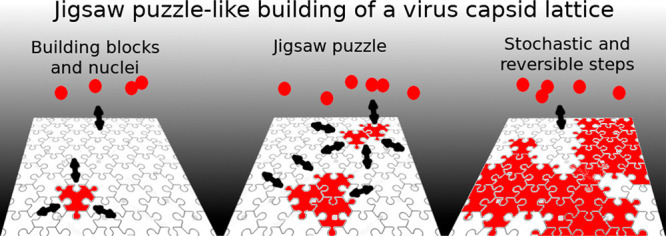- Record: found
- Abstract: found
- Article: not found
Visualization of Single Molecules Building a Viral Capsid Protein Lattice through Stochastic Pathways

Read this article at
Abstract

Direct visualization of pathways followed by single molecules while they spontaneously self-assemble into supramolecular biological machines may provide fundamental knowledge to guide molecular therapeutics and the bottom-up design of nanomaterials and nanodevices. Here, high-speed atomic force microscopy is used to visualize self-assembly of the bidimensional lattice of protein molecules that constitutes the framework of the mature human immunodeficiency virus capsid. By real-time imaging of the assembly reaction, individual transient intermediates and reaction pathways followed by single molecules could be revealed. As when assembling a jigsaw puzzle, the capsid protein lattice is randomly built. Lattice patches grow independently from separate nucleation events whereby individual molecules follow different paths. Protein subunits can be added individually, while others form oligomers before joining a lattice or are occasionally removed from the latter. Direct real-time imaging of supramolecular self-assembly has revealed a complex, chaotic process involving multiple routes followed by individual molecules that are inaccessible to bulk (averaging) techniques.
Related collections
Most cited references57
- Record: found
- Abstract: found
- Article: not found
Assembly and analysis of conical models for the HIV-1 core.
- Record: found
- Abstract: found
- Article: not found
Viruses: making friends with old foes.
- Record: found
- Abstract: found
- Article: not found
